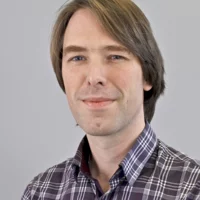The group Structure and Mechanics of Advanced Materials Group (SMAM) performs research on structural and mechanical properties of diverse soft matter systems, including samples of biological origin, composite materials, as well as of metals and alloys. We are developing and applying various X-ray and neutron scattering techniques, diffraction and imaging methods. We operate in situ devices such as mechanical testing devices, a miniaturized laser powder bed fusion device for 3D printing of metals as well as microfluidic devices and in-situ 3D printing for ink-based soft materials, studying alignment in flow.
SMAM supports the user program at SLS and SINQ and welcomes active collaborations with Swiss or internationally based universities, research centres and industry with the aim to advance the use of large facilities for material science and engineering.
The group is closely linked to the Institut des Matériaux at the École Polytechnique Fédérale de Lausanne through Tenure-Track Assistant Professor Marianne Liebi. Teaching materials science at large scale facilities and supporting research at masters and doctoral level are the primary responsibilities of SMAM at EPFL. Part of Marianne Liebi's research group is located at the Chalmers University of Technology in Gothenburg, Sweden.
Marianne Liebi is an ERC starting grant holder of MUMOTT – Multi Modal Tensor Tomography. The project includes method development of tensor tomography, using X-rays as well as visible light and its application in materials and bio-science.
Steven Van Petegem is principle investigator in two Strategic Focus Area (SFA) consortiums: Multi-Mat – Multi-material laser powder-bed fusion and SMARTAM – Fast Optimization of Additively Manufactured Metallic Parts with a Combination of Adaptive Feedforward Control and Numerical Simulation.
The group arises from the PEM group in the Photon Science Divison.
Current Highlights and News
Mapping crystallite orientation in bulk polycrystals
A new experimental technique allows the orientation distribution of small-grained polycrystal materials to me mapped in 3D.
Rethinking 3D Printing for ceramics
Using a powerful combination of in-situ X-ray imaging and high-fidelity simulations, researchers uncover how alumina behaves under laser-based 3D printing—paving the way for more reliable ceramic additive manufacturing.
Texture and residual stress evolution during 3D printing
Discover how advanced neutron diffraction sheds light on the evolution of stress and texture in 3D-printed duplex stainless steel.
Operando Neutron Characterization During 3D Printing
A new laser powder bed fusion device enables real-time neutron diffraction and imaging, providing detailed insights into structural evolution, defect formation, and temperature mapping during metal additive manufacturing.
Mitigating Cracks in Multi-Material Printing
Integrating metallic powders with thin foils in laser powder bed fusion can reduce interfacial cracks and improve microstructure quality in titanium-aluminum multi-material printing.
Acoustic emission signature of a martensitic transformation
Acoustic emission monitoring in 3D printing: real-time insights into martensitic phase transformations and crack formation.








